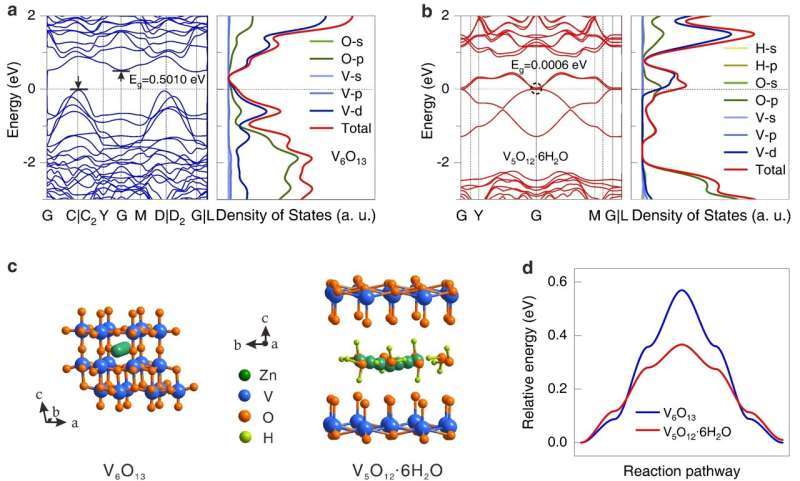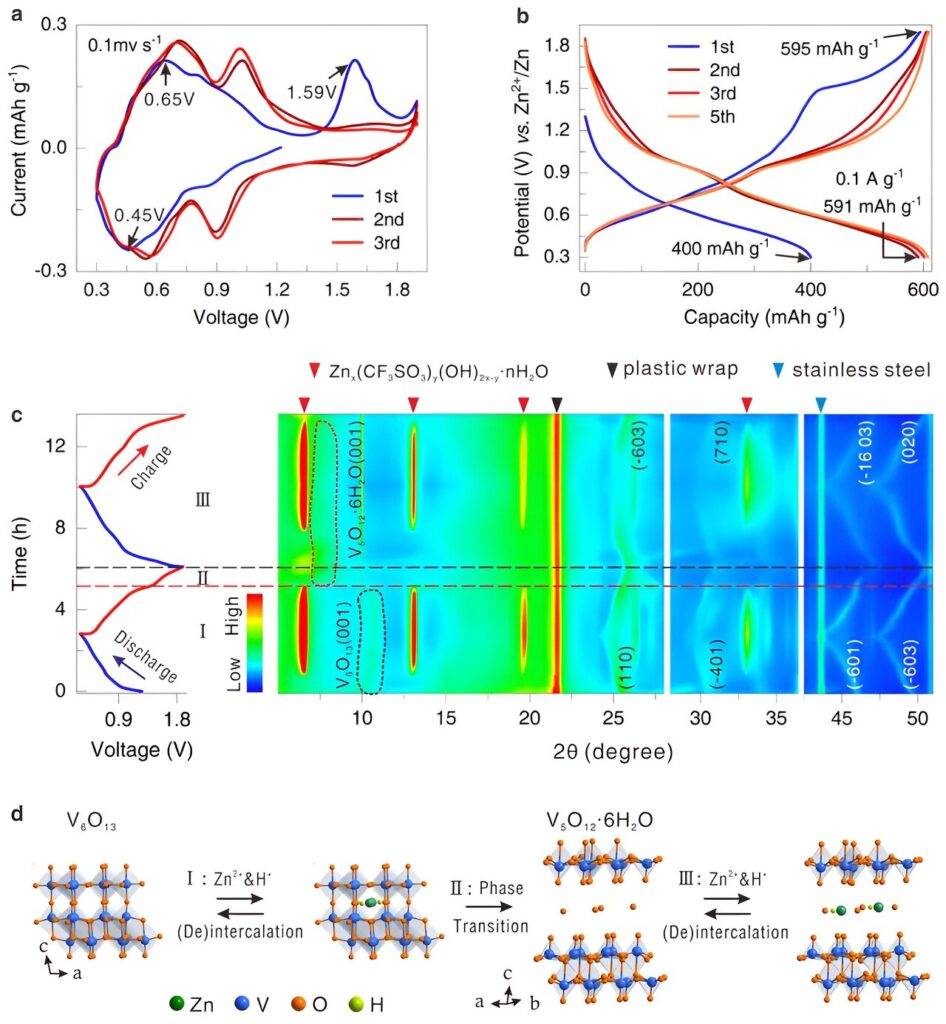A new strategy was proposed in the field of aqueous zinc-ion battery to help increase the capacity of the cathodes, making them more efficient, according to a recent study published in ACS Nano.
“We converted low-valence vanadium into high-valence vanadium in oxides using an electrochemical method,” said Prof. HU Linhua from the Hefei Institutes of Physical Science of the Chinese Academy of Sciences, who led the team.
Aqueous zinc-ion batteries (AZIBs) are a promising technology for large-scale stationary energy storage. To make this technology more viable for commercial use, researchers have developed innovative cathode materials to improve performance. Vanadium oxides (VOx) have been widely considered a favorable option for AZIBs. However, their low electronic conductivity and slow Zn2+ diffusion kinetics have posed challenges in demonstrating the dominance of VOx.
In this study, the researchers constructed an in situ electrochemically induced phase transition to obtain high-performance aqueous zinc ion cathode materials.
They used a special process to change the structure of a material called V6O13 to V5O12·6H2O when it was first charged. This change made the material better at conducting electricity and allowed the zinc ions to move more easily, increasing its ability to store energy.

The modified material also had spaces that made it easier for particles to move around, and it remained stable over many charging cycles. As a result, the new material could be charged very quickly, had a high energy storage capacity, performed well at high charging rates, and lasted a long time without losing its ability to store energy.
This new method provides a new direction for solving the challenges in developing high-performance cathodes for AZIBs, according to the team.


